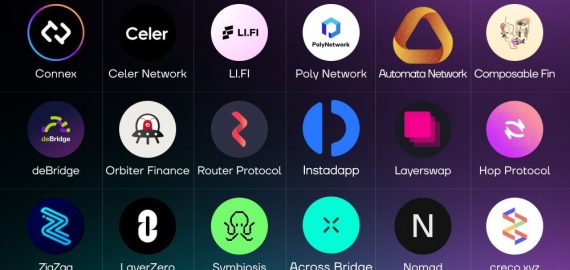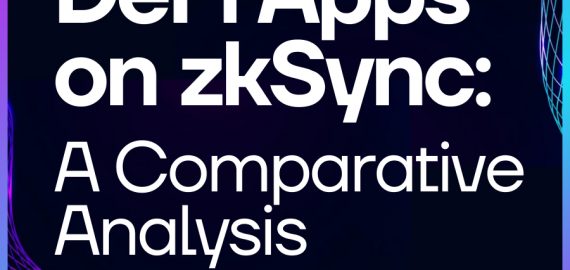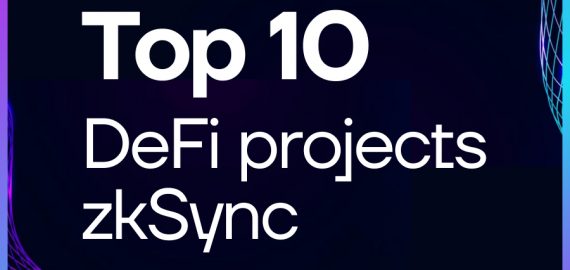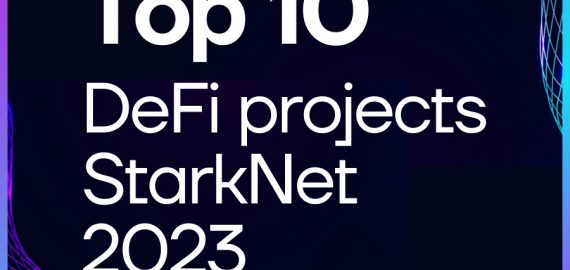Gaining Insight into ZK Rollups and Optimistic Rollups: Innovative Layer 2 Solutions for Ethereum
The challenges that Ethereum encounters in terms of scalability and affordability—like transaction jam-ups, sluggish confirmation times, and soaring fees—demand the creation of a more effective solution that still adheres to the ideals of decentralization.
In light of these challenges, ZK-Rollups have surfaced as a significant theme within the blockchain community, introducing an advanced Layer 2 scaling framework for Ethereum. By shifting transaction processing to an additional layer, ZK-Rollups allow Layer 1 (L1) of Ethereum to concentrate on consensus mechanisms and data availability. This article delves into how ZK-Rollups operate, their advantages, and the hurdles they face during implementation.
- What are ZK rollups?
- Zero-Knowledge Proofs: The Roles of ZK-SNARK and ZK-STARK
- Companies Developing ZK Rollups
- Challenges and Considerations
- Optimistic Rollups: Scaling Possibilities Fueled by Optimism
- Firms Innovating Optimistic Rollup Technologies
- Comparative Insights: ZK Rollups versus Optimistic Rollups
- Conclusion
What are ZK rollups?
The foundational principle of ZK rollups is to utilize zero-knowledge proofs, a cryptographic strategy, which allows for the encapsulation and verification of numerous transactions without disclosing the individual transaction specifics. This validation and aggregation happen off-chain, drastically boosting Ethereum’s scalability.
Let’s break down how ZK rollups function in a straightforward manner:
- Aggregation: The ZK rollups consolidate multiple transactions into one single transaction. Rather than treating each transaction separately on the Ethereum mainnet, they form a batch for more efficient processing.
- Zero-Knowledge Proofs: These cryptographic proofs enable verification of the combined transactions without disclosing any specific details. They serve to validate the legitimacy of the transactions contained within the batch, all while keeping their underlying information confidential.
- Off-Chain Execution: The grouped transactions and their corresponding zero-knowledge proof are executed and validated off-chain. This process alleviates some of the computational demands on the Ethereum mainnet, thus promoting scalability.
- Reduction in Costs and Increased Accessibility: Because ZK-Rollups lighten the load on Ethereum’s L1, they significantly lower transaction fees, making blockchain technology more affordable and reachable for a wider audience. This economic efficiency fosters the potential for more widespread blockchain use and encourages international participation.
- On-Chain Verification: Once the off-chain processing is complete, the collective proof is sent to the Ethereum mainnet for verification. Everyone within the network has the ability to check the proof's validity, reinforcing the security and integrity of the ZK rollup architecture.
By utilizing ZK rollups, Ethereum can attain substantial enhancements in transaction processing speed and reduce the costs associated with those transactions compared to conventional on-chain methods. ZK rollups strike an optimal balance between scalability and sustaining the security and decentralization that Ethereum is known for.
Zero-Knowledge Proofs: The Roles of ZK-SNARK and ZK-STARK
Among the zero-knowledge proof techniques employed in ZK rollups, two noteworthy cryptographic methods are ZK-SNARK (Zero-Knowledge Succinct Non-Interactive Argument of Knowledge) and ZK-STARK (Zero-Knowledge Scalable Transparent Argument of Knowledge). These methods play crucial roles in maintaining privacy and fidelity within ZK rollups.
a. ZK-SNARK:
ZK-SNARK is a particular kind of zero-knowledge proof that allows for the creation of compact proofs for complex operations. It enables one party (the prover) to demonstrate knowledge about certain data without exposing that data itself. In the realm of ZK rollups, ZK-SNARK proofs verify and compress the correctness of batched transactions off-chain, thus allowing for efficient scalability while enhancing privacy.
b. ZK-STARK:
On the other hand, ZK-STARK presents another category of zero-knowledge proofs that deliver scalability and transparency within ZK rollups. Distinct from ZK-SNARK, ZK-STARK doesn’t necessitate a proprietary setup phase, which boosts its transparency and protects it from specific vulnerabilities. While ZK-STARK proofs tend to be larger than those of ZK-SNARK, they offer higher scalability for intricate computations, making them immensely useful for situations that require high computational accuracy, like validating extensive calculations in ZK rollups.
Companies Developing ZK Rollups
Numerous companies are currently engaged in developing ZK rollup solutions, pushing the boundaries of this technology further.
Matter Labs: Established in 2018, Matter Labs has garnered attention for its zkSync rollup solution that utilizes ZK-SNARK technology. The team claims that zkSync is highly compatible (99%) with Yul, an intermediate programming language created for this solution. In March, they rolled out zkSync Era, an alpha version of their Layer 2 scaling solution on the Ethereum mainnet. Notable projects such as Chainlink, SushiSwap, Uniswap, Aave, Argent, 1inch, and Gnosis are all leveraging zkSync.
StarkWare: StarkWare applies its STARK technology to develop ZK rollup solutions that prioritize scalability without sacrificing security. Their focus is on enhancing Ethereum's transaction capabilities, which should pave the way for broader adoption and an improved user experience. They are particularly known for the creation of StarkNet and StarkEx. StarkNet operates using ZK-STARK proofs (Scalable, Transparent Argument of Knowledge), also known as STARK Validity Proofs, and implements user accounts via smart contracts. In contrast to Ethereum and other EVM Layer 2 solutions, StarkNet utilizes a high-performance native programming language called Cairo.
Within StarkNet, transactions aren’t stored directly in a blockchain. Instead, only the resultant changes from these transactions are recorded on the foundational Layer 1 (L1) blockchain. StarkNet uses a recursive proofs system, which generates proofs that effectively minimize the size of the overall proofs required for verification.
Scroll: Scroll is built as a ZK-SNARK rollup that emphasizes compatibility with the Ethereum Virtual Machine (EVM), enabling a seamless shift for existing applications from Layer 1 (L1). The initiative has significantly gained popularity in the Asian Ethereum community, especially in Vietnam.
A crucial element of Scroll’s structure is the Scroll Node, responsible for creating L2 blocks that consist of user transactions. It ensures that these transactions are committed to the Ethereum mainnet, which reduces the need for communication between L1 and L2.
Polygon: While Polygon is predominantly recognized as a scaling solution for Ethereum, it began shifting its focus towards zkEVM last July, unveiling part of the source code and its roadmap for zkEVM. However, their ambitions in ZK technology trace back to 2021 when they set aside $1 billion specifically for ZK-Rollup research.
This March, the Polygon zkEVM entered beta on the mainnet, shortly followed by the introduction of version 2.0 of the protocol, designed to enable developers to build on the protocol using Polygon zkEVM technology. Alongside zkEVM, other ZK innovations like Polygon Miden, Polygon Hermez, and Polygon Zero are currently under development within Polygon’s ecosystem.
Numerous significant projects such as Lens, Balancer, QuickSwap, Uniswap, Aave, Covalent HQ, gaming initiatives like Midnight Society and Oath of Peak, as well as essential service providers such as ANKR, Alchemy, Sequence, and The Graph are expected to launch on the Polygon zkEVM Mainnet beta.
Intmax: As a stateless layer within the Ethereum ecosystem, Intmax effectively occupies a unique niche that differentiates it from other stateful Layer 2 solutions. While Ethereum’s characteristic statefulness enables functionalities like decentralized finance (DeFi), there exists a demand for an interoperable, stateless payment/NFT layer that caters to simpler use cases while remaining intact with the stateful L1/L2 framework. This can be likened to how UDP functions in conjunction with TCP/IP.
Within the blockchain context, a stateful layer signifies a layer that actively manages and retains the state of the system, which encompasses vital information like account balances, smart contract data, and transaction records. The state on Ethereum’s Layer 1 (L1) mainnet is maintained and updated by every participating node, ensuring both consistency and decentralization.
Contrarily, a stateless layer does not directly store or govern the state's management; instead, it relies on the stateful layer, typically the Ethereum mainnet, for necessary state data. A stateless layer hones in on specific functionalities without needing to uphold the entire system’s state. This structure can yield benefits such as reduced gas fees, enhanced privacy, and improved scalability. In this instance, Intmax presents a distinctive function that differs from existing scaling options, addressing a unique gap within the Ethereum infrastructure.
Aztec Network: Aztec Network is a privacy-focused ZK-rollup solution developed on Ethereum, providing both privacy and scalability for various applications. Its mechanism is somewhat similar to that of Bulletproofs as it takes advantage of range proofs. Initially founded in 2017 as a platform tailored for institutions called Creditmint, Aztec Network introduced PLONK in 2019, launched the ZK-rollup in 2021, and subsequently added Aztec Connect in 2022.
The initial version, known as Aztec 1, primarily concentrated on ensuring online privacy. However, it faced challenges that included sluggish performance, ineffective processes, high expenditures, and a narrow scope limited only to basic private transactions. To tackle these shortcomings, the team at Aztec introduced Aztec Connect, significantly enhancing privacy features to accommodate not just straightforward payments but also interactions with a variety of smart contracts. This development not only opened avenues for valuable insights but also demonstrated potential savings that could be realized via packet-based transaction processing along with secure storage methods.
Challenges and Considerations
Despite the appealing advantages of ZK-Rollups, they come with their own set of hurdles. For ZK-Rollups to be effectively implemented and widely accepted, various factors must be considered:
- Ensuring Security and Trust: It's crucial to verify the security and reliability of ZK-Rollup operators. This involves confirming that they accurately manage transactions and safeguard user assets, which calls for robust protocols and effective oversight.
- Striking a Balance Between On-Chain and Off-Chain Processes: Finding a proper equilibrium between on-chain and off-chain activities is vital to uphold the security and integrity of the system. Meticulous design and thorough testing are essential to circumvent any potential vulnerabilities.
- Identifying Potential Weaknesses: As with any emerging technology, ZK-Rollups may harbor vulnerabilities that need to be recognized and mitigated. Ongoing research, systematic audits, and community collaboration play a pivotal role in uncovering and addressing possible shortcomings.
Optimistic Rollups: Scaling Possibilities Fueled by Optimism
Optimistic rollups embody a hopeful perspective on how transactions should function. They operate under the assumption that transactions are valid right from the get-go, without demanding immediate verification on the main blockchain. This optimistic outlook facilitates a higher transaction throughput and dramatically eases the computational strain on the Ethereum network. By executing most transactions off the chain, optimistic rollups help to alleviate network congestion and enhance scalability.
Both optimistic rollups and ZK rollups serve as layer 2 solutions aimed at upgrading Ethereum’s ability to scale by managing transactions off-chain before finalizing them on the main Ethereum network. Although they share the ultimate goal of bolstering scalability, the methods and trade-offs between these two tactics vary significantly. Grasping their similarities and differences is essential to recognize their specific benefits to the Ethereum landscape.
Key Features of Optimistic Rollups
- Transaction Processing Off the Chain: In the case of optimistic rollups, the vast majority of the computations linked to transactions occur away from the main Ethereum network, which helps to lighten the load on it. This allows for speedier processing and enhanced scalability.
- Assuming Transaction Validity: Optimistic rollups function on the principle that transactions are legitimate unless proven otherwise. This foundational assumption enables quicker processing times and diminishes the necessity for prompt on-chain verification.
- Fraud Detection Mechanism: To mitigate the risk of fraudulent or invalid transactions, optimistic rollups leverage a fraud detection mechanism. Users can present evidence of any wrongful activities on the Ethereum network, setting off a resolution protocol for disputes. This process guarantees that dubious transactions can be contested and rectified.
- Regular Verification: Even with the initial presumption of validity, periodic checks are performed on the Ethereum main network to confirm the legitimacy of off-chain transactions. This validation step is crucial for the security and trustworthiness of the optimistic rollup framework.
Firms Innovating Optimistic Rollup Technologies
Optimistic Rollups are still in their infancy as a layer 2 solution, with two pioneering companies at the forefront of this technological advancement.
Optimism: Optimism is a firm dedicated to optimistic rollups, creating an infrastructure layer that empowers developers to construct scalable and efficient applications on the Ethereum platform. Their goal is to significantly enhance transaction throughput and user experience within the Ethereum framework. The firm claims that With users collectively saving $2.69 billion in fees and reclaiming 15.8 years in transaction waiting time, the Optimism Mainnet currently safeguards $2.8 billion in on-chain assets.
Arbitrum: Emerging from Offchain Labs, Arbitrum aims to make scalable and secure smart contracts a reality on Ethereum by utilizing optimistic rollup technology, which operates on the premise that transactions are valid by default, thus enabling quicker transaction speeds and increased scalability. By executing most calculations away from the main Ethereum network, Arbitrum reduces the computational demands placed on it, easing congestion and augmenting scalability.
Arbitrum manages to bundle numerous transactions into a batch for off-chain processing. This method allows for greater transaction volume and lower fees compared to on-chain transactions. While the initial executions are based on optimism, Arbitrum integrates a fraud-proof system to handle any potentially invalid or fraudulent actions. Users have the option to bring forth evidence of misconduct to the Ethereum network, sparking a dispute resolution process that upholds system integrity.
Comparative Insights: ZK Rollups versus Optimistic Rollups
Although both ZK rollups and optimistic rollups offer layer 2 scaling options for Ethereum, they diverge in their methodologies, benefits, and focal points. Understanding these nuances is critical for determining their appropriate applications. Let's delve further into the parallels and distinctions between ZK rollups and optimistic rollups.
Similarities
Layer 2 Scaling Strategies: ZK rollups and optimistic rollups function as layer 2 solutions that process transactions off-chain while settling them onto the main Ethereum network. By undertaking most of the computational tasks away from the main chain, they alleviate traffic congestion and boost transaction speed.
Lower Transaction Fees: Both solutions aspire to minimize transaction fees relative to traditional on-chain transactions. By grouping several transactions together for off-chain processing, ZK rollups and optimistic rollups can dramatically cut down on gas fees, making transactions more economical for users.
Differences
Privacy and Verification Approach:
a. ZK Rollups: ZK rollups emphasize privacy-enhanced scalability by employing zero-knowledge proofs, which allow validation of transaction accuracy without disclosing individual transaction specifics. While ZK rollups excel at maintaining user privacy, they necessitate on-chain verification of the aggregated proof to affirm transaction accuracy.
b. Optimistic Rollups: On the flip side, optimistic rollups concentrate on compatibility and scalability via an optimistic execution framework. They operate under the assumption that transactions are valid from the outset, processing them off the main chain without the requirement for immediate verification. Instead, they depend on a fraud-proof mechanism where users are able to provide evidence of fraudulent or invalid transactions back to the Ethereum network. On-chain verification of the off-chain state is periodically carried out to ensure security and reliability.
Security and Efficiency Trade-offs:
a. ZK Rollups: ZK rollups deliver robust privacy assurances with their use of zero-knowledge proofs, ensuring transaction confidentiality. However, the process of maintaining privacy introduces additional computational strain. Also, the requirement for on-chain validation of assertions can result in delays in transaction finality as the aggregated evidence needs verification on the Ethereum network.
b. Optimistic Rollups: Optimistic rollups prioritize scalability and align with existing smart contracts on Ethereum. By presuming transaction validity, they facilitate quicker processing and lessen the computational demands. Yet, their reliance on a fraud-proof mechanism could allow for the possibility of fraudulent or invalid transactions escaping detection, which necessitates ongoing on-chain validation.
Choosing between ZK rollups and optimistic rollups depends on the particulars of your needs. If robust privacy features are your top concern, then ZK rollups deliver strong protections through zero-knowledge proofs. Conversely, if your focus is on compatibility and swift processing, then optimistic rollups provide a sensible solution while ensuring scalability.
Conclusion
Both ZK rollups and optimistic rollups represent promising layer 2 scaling solutions for Ethereum. ZK rollups utilize zero-knowledge proofs to achieve scalable privacy, while optimistic rollups prioritize compatibility and scalability for existing Ethereum contracts. With pioneering companies such as Matter Labs, StarkWare, Scroll, Polygon, Optimism, Arbitrum, and Intmax driving these innovations, these solutions hold substantial promise for overcoming Ethereum’s scalability challenges and contributing to a more efficient and cost-effective blockchain landscape.
Disclaimer
In line with the Trust Project guidelines Please be aware that the content on this page is not designed to serve as legal, tax, investment, financial, or any other type of advice. It's crucial to invest only what you can afford to lose and to seek independent financial guidance if you have uncertainties. For additional details, we recommend checking the terms and conditions, along with the help and support sections offered by the issuer or advertiser. MetaversePost is dedicated to delivering accurate and impartial reporting, though market conditions may change without prior notice.







